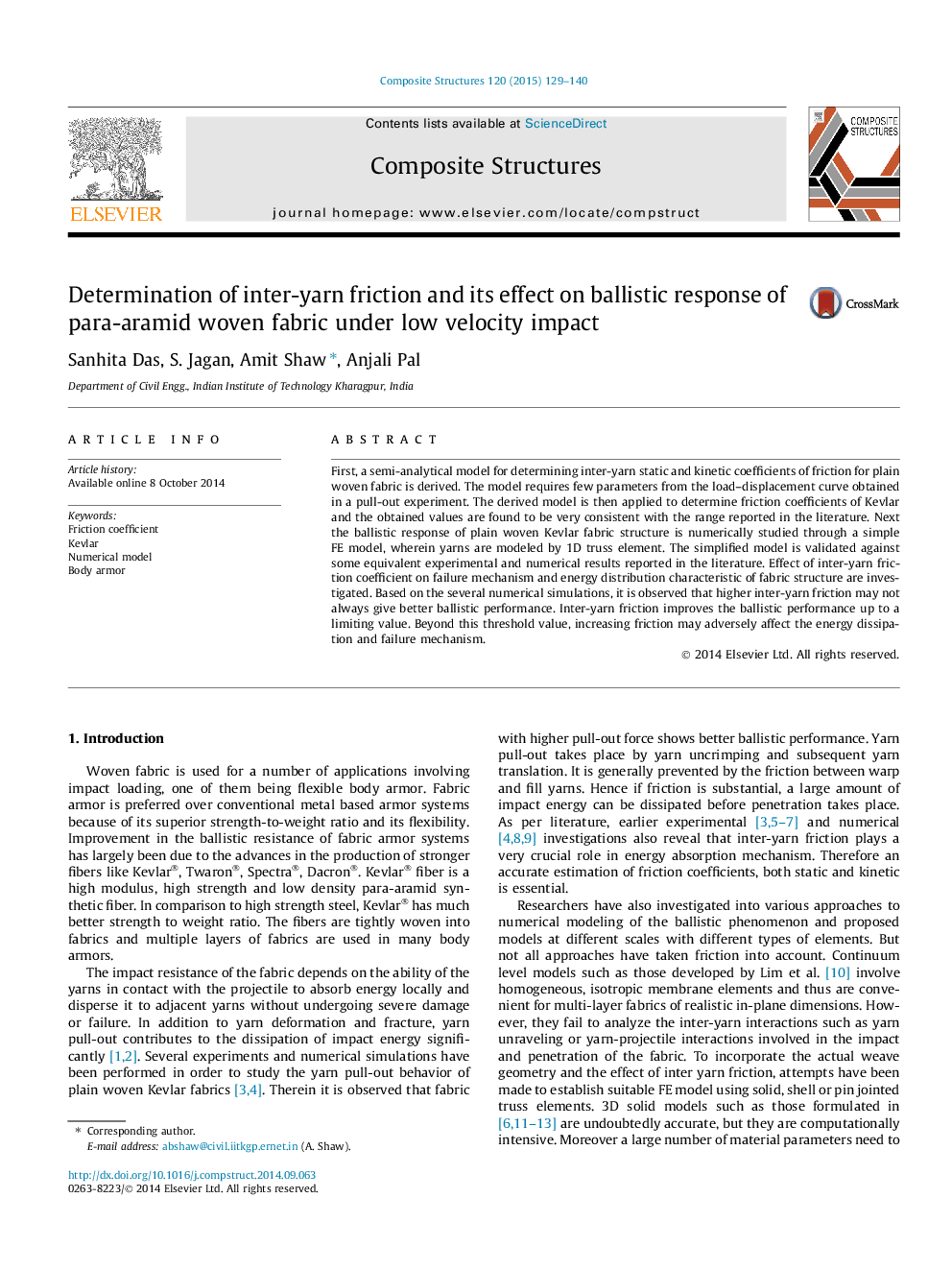| Article ID | Journal | Published Year | Pages | File Type |
|---|---|---|---|---|
| 6707153 | Composite Structures | 2015 | 12 Pages |
Abstract
First, a semi-analytical model for determining inter-yarn static and kinetic coefficients of friction for plain woven fabric is derived. The model requires few parameters from the load-displacement curve obtained in a pull-out experiment. The derived model is then applied to determine friction coefficients of Kevlar and the obtained values are found to be very consistent with the range reported in the literature. Next the ballistic response of plain woven Kevlar fabric structure is numerically studied through a simple FE model, wherein yarns are modeled by 1D truss element. The simplified model is validated against some equivalent experimental and numerical results reported in the literature. Effect of inter-yarn friction coefficient on failure mechanism and energy distribution characteristic of fabric structure are investigated. Based on the several numerical simulations, it is observed that higher inter-yarn friction may not always give better ballistic performance. Inter-yarn friction improves the ballistic performance up to a limiting value. Beyond this threshold value, increasing friction may adversely affect the energy dissipation and failure mechanism.
Related Topics
Physical Sciences and Engineering
Engineering
Civil and Structural Engineering
Authors
Sanhita Das, S. Jagan, Amit Shaw, Anjali Pal,
